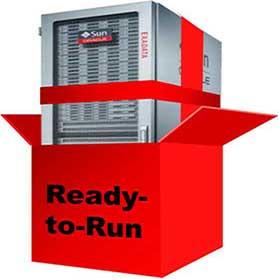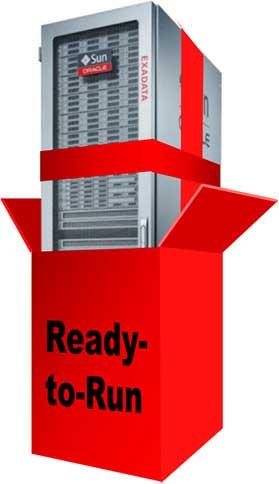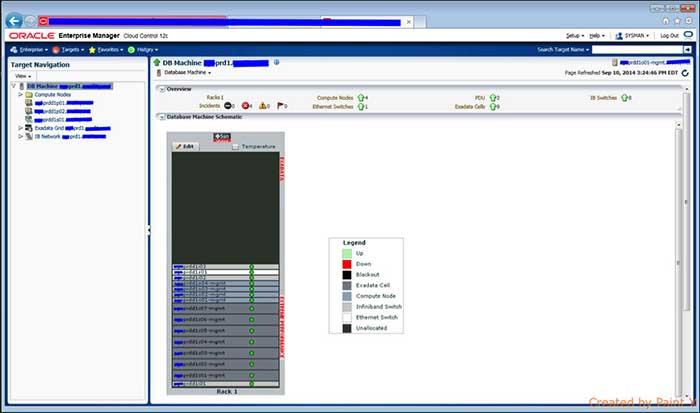 Representing the next generation in database computing, an evolution many decades in the making, Exadata is Oracle’s flagship database machine. Since its relatively recent inception in 2008, Exadata has become the fastest-adopted product in Oracle’s entire history. This unprecedented success saga is attributed to many innovative features that Exadata has folded unto itself by successfully incorporating cutting-edge technologies and getting them to work with each other. This has been accomplished by leveraging the hundreds of man-years of research and development spent within the Oracle Database server family realm.
Representing the next generation in database computing, an evolution many decades in the making, Exadata is Oracle’s flagship database machine. Since its relatively recent inception in 2008, Exadata has become the fastest-adopted product in Oracle’s entire history. This unprecedented success saga is attributed to many innovative features that Exadata has folded unto itself by successfully incorporating cutting-edge technologies and getting them to work with each other. This has been accomplished by leveraging the hundreds of man-years of research and development spent within the Oracle Database server family realm.
The goal of this introductory article is to familiarize the reader with the Exadata Database Machine by presenting a 360-degree synopsis and overview.
Exadata integrates a lot of next-generation technologies at both the hardware and software layers. Everything is preassembled, precooked, and well tested at the factory and ready to go as soon as it is delivered to your data center; this has been one of the distinguishing factors behind its wild success within the industry.
So how do we begin to describe Exadata?
If there is a common denominator that all categories and tiers of Exadata adopters and users could mutually agree upon in summing up Exadata, it would be “superb performance.”
There are other characteristics for which Exadata is also well known: consolidation, Intelligent Storage, Smart Scans, Offloading, Hybrid Columnar Compression (HCC or EHCC), next-generation InfiniBand (IB) as a networking fabric, tons of PCIe Flash Cache (FC), database cloud computing, and most famously a ready-to-run database machine.
My blog attempts to cover all of these topics and a whole lot more by taking the reader on a fun-filled journey of discovery and awareness within the Exadata realm.
Note
An Oracle Exadata Synopsis
Exadata is a complete and integrated database machine: hardware and software stitched together into a cohesive engineered system. It is ready to go when delivered to your data center: You can start loading data into a precreated database or start creating new databases and using Exadata on Day 1.
To summarize Exadata at a high level, by leveraging the decades of research and development performed within its database server family, Oracle coupled the Oracle Database server software with a superfast networking fabric on an Intelligent Storage layer. Exadata incorporates hundreds of widely adopted best practices right from the factory, at both the hardware and software layers.
Cutting down deployment time was a major goal in the design of Exadata. Oracle wanted to deliver a ready-to-go engineered system on Day 1, with no time needed to glue the various components to each other: Compute to Storage to Network. This is depicted in Figure 1 from Oracle documentation.

Figure 1.1 A depiction of Exadata from Oracle documentation that holds very much true as advertised
Many relatively new and innovative technologies ranging from InfiniBand as a choice of networking fabric to large amounts of Flash Cache to the data-cognizant Intelligent Storage Cell software have contributed to Exadata’s success.
At the design level, much care was taken to eliminate single points of failure (SPOFs) at each and every layer of the hardware, from entire Storage Cells to power supplies to RAC Compute Nodes and a whole lot more.
On top of the existing innovations, Exadata has gone through rapid, almost annual release cycles to come out with newer, faster, and more cutting-edge versions since version X2 (using Sun as a hardware platform). Exadata V1 was the machine that was built on HP hardware (this version has been all but replaced for the most part by later versions of Exadata based on Sun hardware).
An Engineered Database Machine
Exadata is an engineered database machine; although it is not an appliance, there are some overlapping characteristics between appliances and Exadata. At the software tier, Oracle leveraged the cluster version of its database server family—Real Application Clusters (RAC)—along with innovating the Storage Cell software at the Storage Tier. Automatic Storage Management (ASM) deployed on the DB Compute Nodes is used to manage the carved-out disks to formulate ASM disk groups.
This is in line with Oracle’s current strategy of producing engineered systems on Sun hardware after the acquisition of Sun Microsystems in January 2010, not just at the Oracle Database tier but also at other tiers—for example, middleware, analytics, Big Data, and storage.
This single-vendor approach has for the most part resulted in reducing overall total cost of ownership (TCO) for enterprises by integrating all the hardware and software tiers into a single integrated engineered system.
Note
All changes, patches, upgrades, and so on are tested and certified by Oracle as a whole machine: Compute, Storage, and Network Tiers are engineered to work optimally in a tightly integrated fashion.
How Exadata Changes Your Job Role
Historically and traditionally, Oracle Database administrators (DBAs) are very used to living in their own world, minding the Oracle software realm of database servers, whereas system administrators mind the OS side of the house. With the advent of Exadata, while this approach is still the mainstay option, it has been challenged by a newer alternative approach: DBAs have started to learn the hardware and system administration side of the house and started to incorporate and include all of the involved duties under their management umbrella.
Notwithstanding employing/deploying either of these management and administration approaches, DBAs and system administrators have been compelled to transform their roles into database machine administrators (DMAs), a relatively new term in the industry. In other words, both DBAs and system administrators have had to learn newer technologies in order to effectively and efficiently perform duties as Exadata management and administration personnel.
Tip
Oracle Enterprise Manager 12c
Exadata is an engineered conglomerate of sophisticated technologies and stands at the most complex end of the Oracle Database family spectrum; therefore, an advanced and sophisticated administration and monitoring solution is required to manage Exadata: the Oracle Enterprise Manager (OEM) 12c Exadata Plugin is built by Oracle for Oracle technologies to provide this comprehensive end-to-end solution.
OEM has been significantly enhanced and improved in version 12c to provide management, monitoring, administration, and support capabilities for Exadata.
In addition to showing how to perform daily administration tasks on Exadata within OEM 12c, this blog also covers initial setup, configuration, and discovery of assets and targets by the Exadata Plugin. Figure 2 shows a holistic overview of the Exadata machine in OEM 12c.

Figure 1.2 Holistic overview of Exadata in Oracle Enterprise Manager 12c

